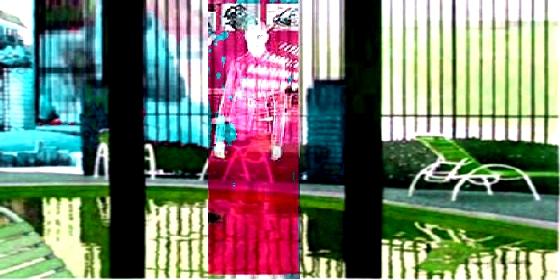BY LETTER
Lynk
Technology > Application > Communications
Culture and Society > Daily Life
Technology > Technology Type or Material > Drytech/Hylotech
Technology > Application > Everydaytech
Technology > Technology Levels > High Tech / Hitech
Technology > Technology Type or Material > Virtual/Infotech
Sophonts > Modosophonts > Virtuals
Culture and Society > Daily Life
Technology > Technology Type or Material > Drytech/Hylotech
Technology > Application > Everydaytech
Technology > Technology Levels > High Tech / Hitech
Technology > Technology Type or Material > Virtual/Infotech
Sophonts > Modosophonts > Virtuals
Lynk
Used as a verb, to lynk is to use a region of utility fog or even a full utility fog angelnet to project an eidolon to a distant (or virtual) location while simultaneously configuring the local environment to mimic that location. This effectively 'teleports' the user to that location.Example: "E lynked to the party from eir house".
Lynking is a common form of travel and communication in most areas that employ either angelnets or utility fogs and is used in a variety of modes:
Full Sensory: In this mode the angelnetting around the user is configured to provide a full-sensory replication of the environment being lynked to. The user's neural impulses are intercepted and suppressed at their source while the actions the user intended to carry out are performed by the eidolon. The sensory inputs of the eidolon are in turn transferred into the sensory matrix of the user.
Full-sensory lynking is primarily limited by lightspeed signal delays and is usually only employed over distances of less then a thousand kilometers.
Limited Interactive: In this mode the angelnetting around the user is again configured to provide sensory input replicating the 'destination'. However, sensory data are usually limited to visual, auditory, and occasionally tactile inputs. In addition, the eidolon control protocols available to the user are much more limited. General direction and actions are still transferable, but fine motor control is either limited or non-existent.
Limited-interactive lynking is usually employed in situations where lightspeed communication delays make fully interactive eidolon control impractical. It is usually employed at ranges from a few thousand to several hundred thousand kilometers.
Audiovisual Only: In this mode the angelnetting around the user is again configured to replicate the environment of the 'destination'. However, only audio and visual interaction is possible. In effect, the user can observe and communicate with the destination, but cannot interact with it physically. Any movement on the part of the user is usually accomplished by 'floating' the eidolon from place to place.
Audiovisual only mode is usually employed when the distance between the user and the destination is so great that there is a significant lag in signalling due to lightspeed limitations.
Lynk-node
A lynk-node is a specified location or area within a given location where eidolons are generated and occasionally deactivated. Lynk-nodes are used in those cultures or polities that find the use of unregulated lynking disruptive. Having sophonts apparently materializing out of thin air with no warning, or appearing to be in a deep trance or coma with no indication as to whether or not the condition is voluntary has been deemed by these cultures to be a serious public nuisance. Therefore lynk-nodes (also known as lynk-points, lynk-gates, or lynk-spots among other terms) are set up around public (and occasionally private) areas to act as controlled 'entry' and 'exit' points for incoming eidolon users.In some areas in which the availability of high-grade angelnet components is more limited, larger 'lynk-stages' may be used in which the entire interaction between a traveller and their destination takes place within the controlled environment of the lynk enclosure rather then via the telepresence of an eidolon moving freely through the destination environment. Such systems are primarily used for high quality communication or virtual conferencing purposes.
Lynk-nodes come in a variety of designs including doorways, freestanding arches, booths, platforms, and fountains. Regardless of the design, their purpose is to provide a specified location for an eidolon to materialize before moving out into the surrounding environment. Most designs also include a nearby area for 'outgoing' travelers to rest comfortably while 'traveling'.
Lynk-mark
A lynk-mark is a visual cue, icon, or display device used to indicate to a sophont's fellow citizens that e is engaged in lynking. Common lynk-marks take the form of masks, projected icons, or illuminated pins or bracelets.Lynk-marks are used by some cultures that permit their citizens to engage in lynking from wherever they happen to be instead of in specified areas, but still prefer that they provide some indication that they are engaged in lynk travel instead of some other activity.
Related Articles
Appears in Topics
Development Notes
Text by Todd Drashner
Initially published on 27 October 2005.
Initially published on 27 October 2005.







